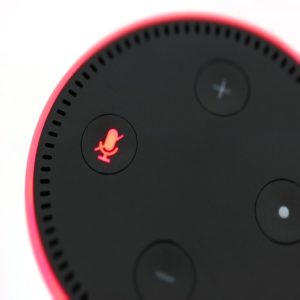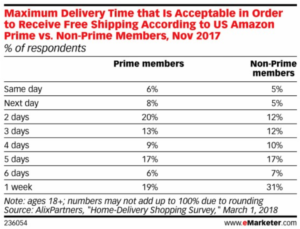New Research Shows Little Consumer Interest in Smart Assistants; The Best Time to Gain GDPR Consent
by Hugh Williams on 15th Mar 2018 in News


RetailTechNews’ weekly roundup brings you up-to-date research findings from around the world. In this week’s edition: New Research Shows Little Consumer Interest in Smart Assistants; The Best Time to Gain GDPR Consent; and Delivery Speed Demands Getting Tougher.
New Research Shows Little Consumer Interest in Smart Assistants
There is significant interest in IoT, with 91% of those surveyed declaring interest in the connected home, according to research by Judopay.

However, just 17% of those surveyed – the same percentage as said they weren’t likely to buy any smart technology in the future – say they were likely to invest in smart assistant devices such as Amazon Echo, Google Home, or Apple HomePod. More than double that figure (35%) are likely to buy smart heating devices.
Additionally, the research shows that overall intent to purchase a connected home device is high, despite the nascent state of the connected home industry. Over half (52%) intend to invest in smart home devices in the next five years. Yet consumers cited cost (55%) as the most significant barrier to adoption, a far greater concern than hacking.
Nearly six out of 10 people (57%) said they would find it useful to pay for things through a smart device, a number likely to rise significantly as adoption grows and consumers can see the benefits of seamless commerce firsthand. There’s a gender disparity in terms of connected commerce that brands and businesses will need to overcome, with 67% of men surveyed saying connected home payments would be useful, compared to just 53% of women.
The Best Time to Gain GDPR Consent
Companies trying to reconfirm marketing preferences are at risk of triggering mass unsubscription requests, if they mail in the morning asking customers to make a decision, according to research by SmartFocus.

The most likely time for unsubscribes is between 10:15am and 12:30pm, with the time period producing a pronounced 20% spike in email unsubscribe rates compared with the rest of the day. Such a pronounced rejection could decimate an established marketing database while trying to confirm marketing preferences. Retailers and brands must avoid this time when contacting consumers about future communication preferences. In contrast, 6pm produced the fewest unsubscribes, 15% lower than the daily average, and 35% below the peak.
Most marketing emails (600,000 an hour) were opened between 6pm and 9pm. Just half that volume are opened at 9am, at the beginning of the business day, though the number of unsubscribes is not always proportional to the number of emails sent. Before 12 noon, the proportion of unsubscribes against emails sent can be up to 40% higher than other times of the day.
Delivery Speed Demands Getting Tougher
Amazon Prime's speed is acclimating shoppers to faster delivery, and these greater expectations are affecting all retailers, finds a study by AlixPartners.

Almost all (96%) of U.S. internet users said free shipping affects their purchase decisions. That is now practically a given. But the maximum number of days a shopper will wait for a package with free delivery to arrive has shrunk, from 5.5 in 2012 to 4.1 in 2018, the survey finds. And it's declined even further among Amazon Prime members, to 3.8 days. Nearly one-third (31%) of non-Prime members were willing to wait a week for free delivery.
On the surface, this may not seem significant, but shipping can only be so fast. That said, same-day delivery is only used by a small – but growing – minority of buyers. This content was originally published in RetailTechNews.








Follow ExchangeWire